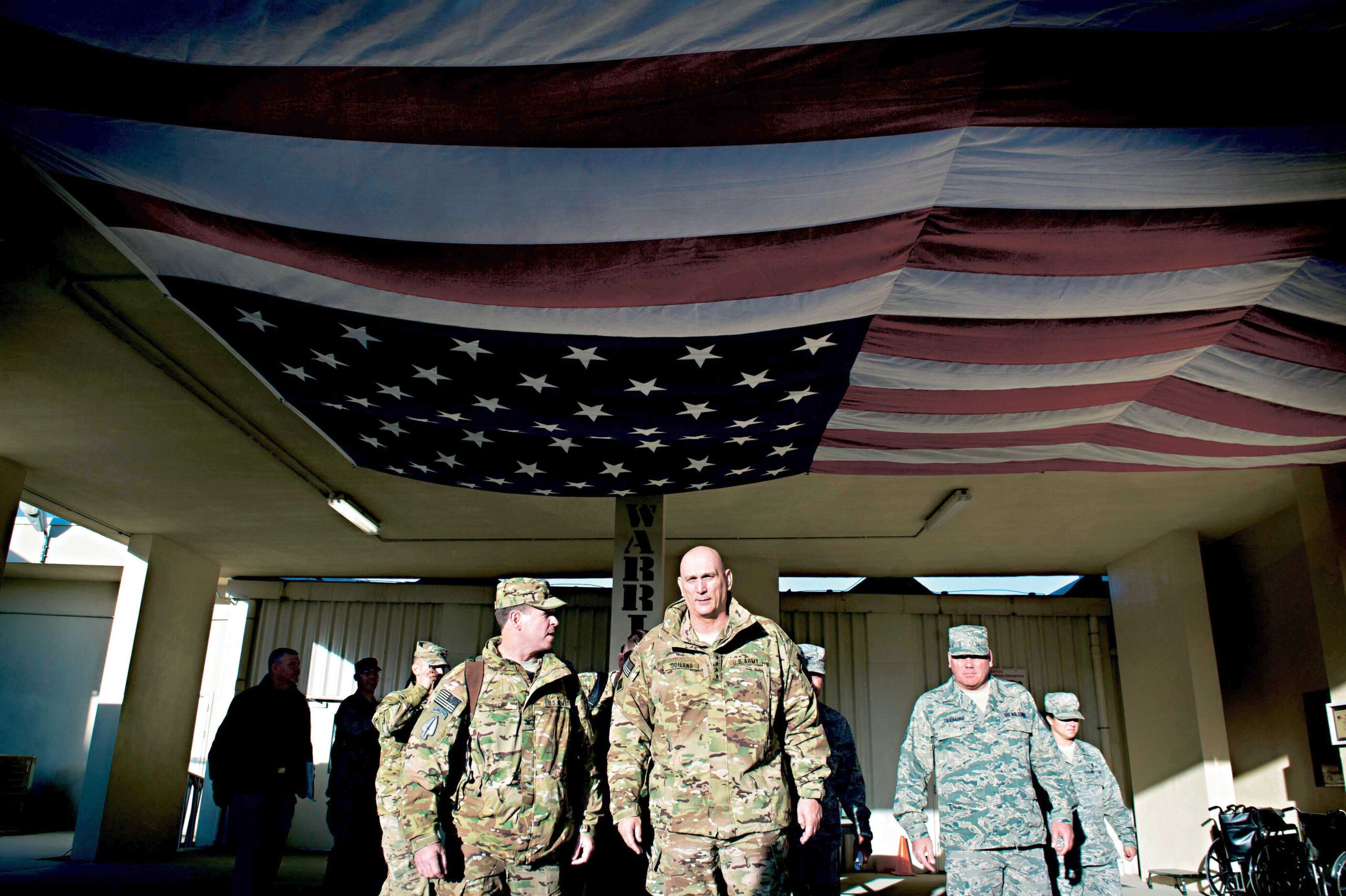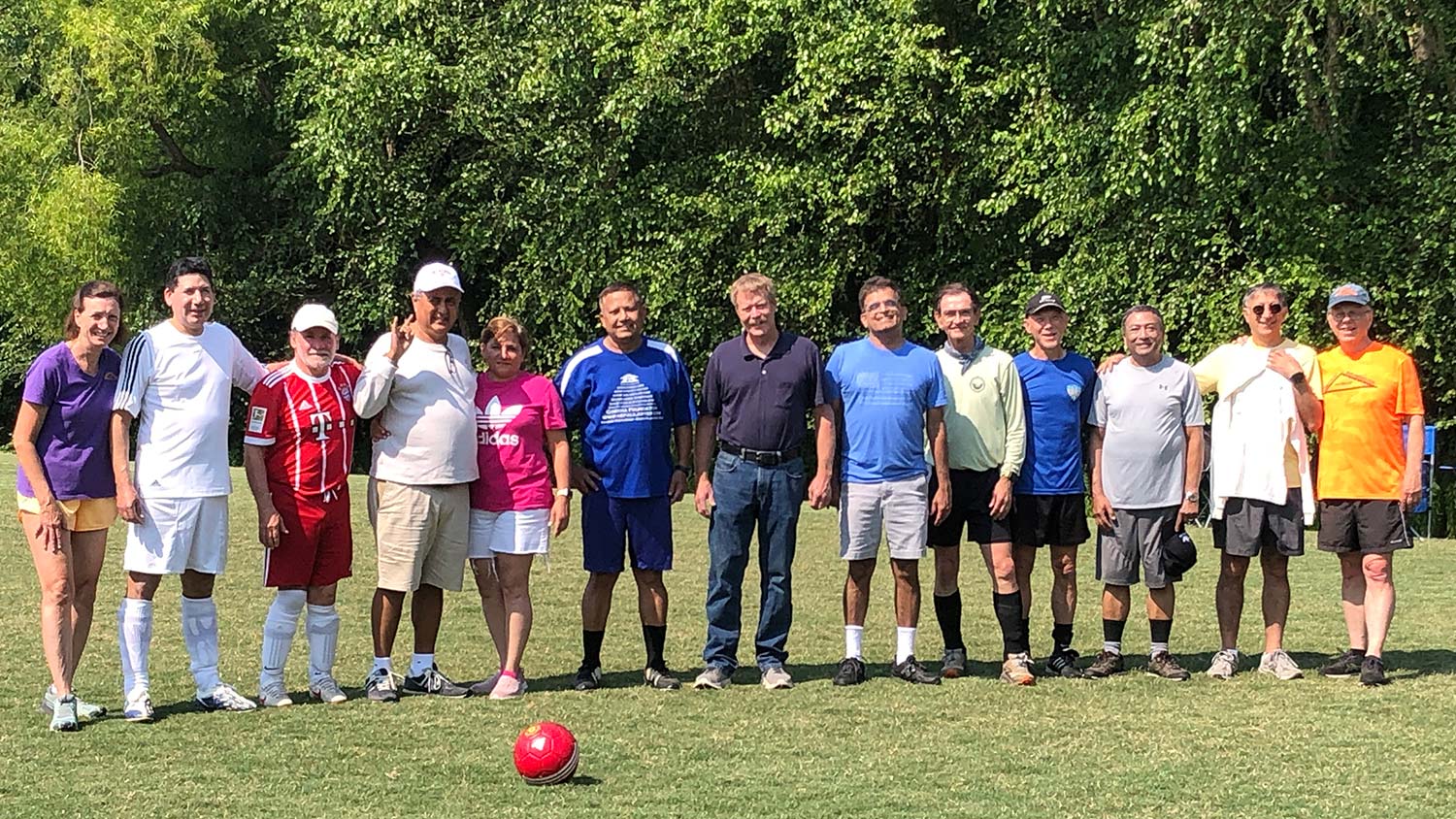A Reduction in Force: Remembering Gen. Ray Odierno ’86
The four-star Army general and the 38th U.S. Army Chief of Staff died Oct. 8. Take a look back at NC State magazine's 2012 cover story about the alumnus.

Gen. Ray Odierno ’86 MS tackles his latest mission — downsizing the Army he has served in for 36 years.
WASHINGTON—Gen. Ray Odierno ’86 ms has faced plenty of challenges during his 36 years in the U.S. Army since graduating from West Point in 1976. He has sat across the negotiating table from the Russians, using his master’s in nuclear engineering from NC State to help hammer out agreements on intermediate-range nuclear weapons. As the general in charge of operations in northern Iraq, Odierno oversaw the capture of Saddam Hussein in 2003, famously describing the former dictator as hiding like a rat in a hole when he was found. He’s even joined Comedy Central’s Stephen Colbert for an on-camera a cappella duet of “I’ll Be Home for Christmas” in tribute to troops returning home from Iraq.
But Odierno may now be facing his greatest military challenge, one that could fundamentally alter the U.S. Army and how it operates. The number of troops in Afghanistan and Iraq is on the decline as 10 years of combat and security efforts there wind down. Meanwhile, Congress is attempting to rein in the federal budget with cuts to entitlement programs, defense spending and other parts of government. As a result, the U.S. Army must get smaller. Congress has ordered that the Army be reduced by 80,000, more than any other service, over the next five years.
That would bring the total force to 490,000, closer to the numbers the Army had about a decade ago—before the conflicts in Iraq and Afghanistan. Those were the lowest numbers the Army has experienced in modern times, but some experts say the cuts could go even deeper.
The responsibility for figuring out how to make those cuts falls to Odierno, a four-star general who is chief of staff of the Army. The hallway leading to Odierno’s office in the Pentagon is filled with portraits of those who have held the position before him: generals like Eisenhower, Pershing and Westmoreland. They each faced their own challenges to ensure that the Army was prepared to do what was asked of it. Now it is Odierno’s turn.
You have to culturally understand where you’re operating. You have to be more disciplined in how you conduct your operations. You have to be able to think very quickly on your feet and you have to be able to adapt and adjust. We’re expecting more and more out of our young leaders as we move forward.
“The cuts we get are not easy,” Odierno says during an interview in his Pentagon office, where he wears the same combat fatigues and boots that his soldiers wear. “They will be difficult. But, today, the United States Army is seen as the finest Army in the world, and when we get finished with these reductions, we will still be the finest Army in the world.
“We’re going to do what’s necessary. The one thing that I want our Army to be able to do in the future is operate across a spectrum of capabilities. And so if our nation needs to do peacekeeping, we’ll do that. If our nation needs us to help other nations build, we’ll do that. If they need us to fight and win in a very complex environment, we’ll do that. If they need us to do a small counterinsurgency operation, we’ll do that.”
Making the Army smarter while it gets smaller is no easy task. When the Army has drawn down its ranks in the past, it has done so during peacetime. But as Odierno is quick to point out, the U.S. still has almost 100,000 troops in precarious spots around the world. The Army also must learn from its experience in Iraq and Afghanistan, where it has fought what Odierno calls “hybrid warfare” in which soldiers face quickly changing circumstances —such as a civilian market suddenly becoming the scene of an attack—and enemies who aren’t always wearing the military uniforms of another country. At the same time, Odierno and other military experts say the Army may not find itself in a comparable situation again. Odierno cannot make the mistake, as other generals have been accused of in the past, of simply fighting the last war again.
“We know what the Army was supposed to do over the last decade—large-scale, protracted stability operations,” says Todd Harrison, a senior fellow for defense budget studies at the Center for Strategic and Budgetary Assessments in Washington, D.C. “We’re also pretty sure we’re not going to be doing that again in the near future. The country just doesn’t have the appetite for it. But that still leaves the question of what the Army is going to do. Peacekeeping operations? Smaller stabilization operations? Is it going to be a lighter Army, move faster, respond faster—maybe work more with special operations? We just don’t know yet.”




Those are the sorts of questions that Odierno—who is known simply as “The Chief” in the halls of the Pentagon—is wrestling with. Sitting in his spacious Pentagon office, where an electronic message board gives him the time from spots around the globe (“We have soldiers all over the world,” he says matter-of-factly.), Odierno says he is confident he can make the Army smaller and better at the same time. “With the cuts, as currently staged, we can meet the needs of our nation and continue to provide the right security for our nation,” he says. “I truly believe that.”
That may require some base closings, which Odierno knows would be politically difficult. Most of the reductions will be handled through attrition, but Odierno has to make sure that he doesn’t lose the best soldiers and officers, those who have learned valuable lessons from their time in Iraq and Afghanistan. It will require organizational changes, which may require shifts in personnel at all levels. While Odierno’s plans are still being developed, he has offered some insight into his vision for the new Army. Noticeably absent is talk of new weapons systems that might give soldiers a greater technological edge, a tacit acknowledgment of the new budget realities. Instead, Odierno talks about making his soldiers more aware of the cultures of the countries and regions where they might be asked to fight. That emphasis is seen in his plans to assign units to specific regions of the world for extended periods, including a new effort to align with military forces in Africa and a new joint training initiative with the Australian military as the U.S. Army shifts some of its attention and resources to Asia and the Pacific region. But it can also be seen on the campus of NC State, where the Department of Defense has provided grant money to pay for intensive foreign language instruction in Chinese, Arabic, Persian, Russian and Urdu for ROTC students.
“You have to culturally understand where you’re operating,” Odierno says. “You have to be more disciplined in how you conduct your operations. You have to be able to think very quickly on your feet and you have to be able to adapt and adjust. We’re expecting more and more out of our young leaders as we move forward.”
Odierno also stresses the importance of the Army figuring out ways to use the information age—and the ability it has given anyone with a cell phone to alter the nature of a military operation—to its advantage. Officers have to be able to respond quickly to any new information they may receive, whether it moves through normal military channels or via Facebook or Twitter. Odierno also talks about strategically aligning more traditional Army units with Special Operations forces, giving them the ability to be more nimble in responding to changing conditions.
“I have to learn from the lessons of the last ten years, and then try to apply them to what we think the future complex environments are,” Odierno says. “So we need a force that is leaner, we need a force that is agile, we need a force that is flexible, we need a force that can be what I call discriminately lethal. Because as we move forward, we do not want to have collateral damage. We don’t want to have civilian casualties.”
I have to learn from the lessons of the last ten years, and then try to apply them to what we think the future complex environments are. So we need a force that is leaner, we need a force that is agile, we need a force that is flexible, we need a force that can be what I call discriminately lethal. . . .
Odierno is driven, naturally, by his own experiences during three tours in Iraq, including one as the commander of all the multinational forces there. Odierno, who went to high school in Rockaway, N.J., before enrolling in West Point, was initially drawn to the Army by its camaraderie and the moral and ethical values that he found there. The Army he joined was in a period of transition following Vietnam—most notably going from an army that relied on the draft to one that relied on volunteers—and he has relished the chance to help the Army change and rebuild itself throughout his career. “I felt I was part of something that was bigger than myself, and I wanted to continue to do that,” he says.
It was Odierno’s military career that brought him to NC State in the 1980s. He was a captain in the Army, stationed at Fort Bragg in eastern North Carolina, when he was selected by the Army to go to graduate school. The Army picked what he would study—nuclear engineering—and Odierno picked the school. “North Carolina State had one of the most highly ranked nuclear engineering programs in the country,” he says. But Odierno had been out of school for eight years, and the transition from the military to academia was initially difficult. “I had to readjust,” he says, “and the people at NC State helped me do that, and they helped me succeed.”
Odierno has stayed connected to NC State, returning to the university in December 2010 to deliver the winter commencement address. He used that occasion to challenge today’s students to look for opportunities to serve, either through the military or in their communities. “Only when we commit to a cause greater than ourselves can we reach our full potential,” he told the new graduates.
That sentiment applies to Odierno’s feelings about the young men and women in today’s all-volunteer Army, who he says have far fewer discipline problems than the Army experienced during Vietnam. He says today’s soldiers are generally more physically fit and more mentally prepared than soldiers of the past. He also says today’s soldiers are more battle-tested than their predecessors after a decade of combat in Iraq and Afghanistan. One of his concerns is figuring out how to reduce the Army’s ranks without losing the knowledge and experience gained during that period.




The same can be said, Odierno notes, of the National Guard, which has fought side-by-side with regular Army soldiers in Iraq and Afghanistan. The new head of the Army National Guard is Gen. William E. Ingram Jr. ’70, a former adjutant general in North Carolina who studied textiles at NC State. Like Odierno, Ingram has been part of the military his entire adult life, joining the Army National Guard two weeks after he graduated from NC State.
Ingram, in an interview at his office in the Pentagon, says that today’s National Guard is a far cry from the “weekend warriors” that they were derisively referred to for years. The soldiers in today’s Guard have served in Iraq and Afghanistan, often side-by-side with regular Army soldiers. Many of them, like their Army counterparts, have done multiple tours in Iraq.
“We’re the most experienced that we’ve been in our history,” says Ingram, who grew up in Elizabeth City, N.C., and still maintains a home in eastern North Carolina. “In theater, you can’t tell the difference in a guardsman and an active-duty soldier. They have performed quite well during the war period.”
Ingram knows cuts are also coming to the National Guard, but he hopes that he can maintain strong training for his citizen-soldiers so that they don’t lose the knowledge they gained in Iraq and Afghanistan. “We’re probably the best value for America because of the great experience and the upgrade of equipment that we have gotten during the last decade while we have been at war,” Ingram says.
Odierno says the Guard’s role will change, but exactly how is not yet clear. “The active component can’t continue on the same page; the National Guard can’t continue on the same page,” he says. “But what we don’t want is to lose this great experience that we’ve gained in the National Guard. We’ve got to find that right balance between exploiting their experience, but not doing so at the expense of long-term deployments and mobilization.”
As he sorts through his plans for the Army, Odierno must wrestle with numerous constituencies—from Congress to leaders of the other branches of the military. But one constituency—the men and women now serving in the Army—takes precedence for Odierno. As cuts are made, he is determined that the soldiers who have fought these past 10 years—and their families—are taken care of. “We’ve got to make sure that we take care of those who leave the service and those who have been injured, whether it be physical casualties or psychological casualties,” he says. “We want to make sure we take care of our soldiers and families who have served so valiantly over the last ten years.”
And then there is his commitment to telling the Army’s story, whether it be through a guest appearance on Stephen Colbert’s show, The Colbert Report, on Comedy Central (where he once gave Colbert a military haircut on a stage before hundreds of soldiers) or through Odierno’s Facebook page (with nearly 20,000 fans), blog entries on Army Live or his account on Twitter (with more than 6,000 followers). Odierno uses his Facebook page to congratulate the winners of a contest for drill sergeants, to post videos of his interviews or to recognize the veterans who fought in Vietnam. His tweets include everything from 12 tips on ways people can help veterans with Post-Traumatic Stress Disorder to a link to a story on soldiers who qualified for the 2012 Olympics. “I think it’s important that people understand the sacrifice of our Army and that we’re here to provide their security,” he says. “So I try to do whatever I can to do that.”
Odierno has not used those platforms, however, to protest the cuts being proposed for the Army. Instead, he has taken a big-picture view, saying that the Army has to do its part to help the United States get its financial affairs in order. “You have to have a strong economy and you have to have a strong political system in order to have influence here in developing your own strategies and around the world,” he says.
Harrison, with the defense think tank in Washington, D.C., says it is impossible to overstate the challenge that Odierno faces. “It’s going to be painful,” he says. “It’s going to be difficult. But if Odierno, Ingram and other leaders of the Army can do this with a strategy of what the Army needs to be in the future, the drawdown can be done efficiently and we could have an Army that’s better suited for what the country needs.”
One longtime Washington observer says that even after a wildly successful 36-year military career, Odierno’s greatest legacy may just now be in the making. “Up to now, history has remembered generals by the campaigns they fought,” Doyle McManus, a Washington columnist for the Los Angeles Times, wrote earlier this year. “By that measure, Gen. Odierno has already made his mark through the successful surge in Iraq he helped orchestrate. But ultimately, he may be remembered primarily for something less dramatic but more important: using the lessons of Iraq and Afghanistan to create a smaller but smarter force.”
- Categories:

